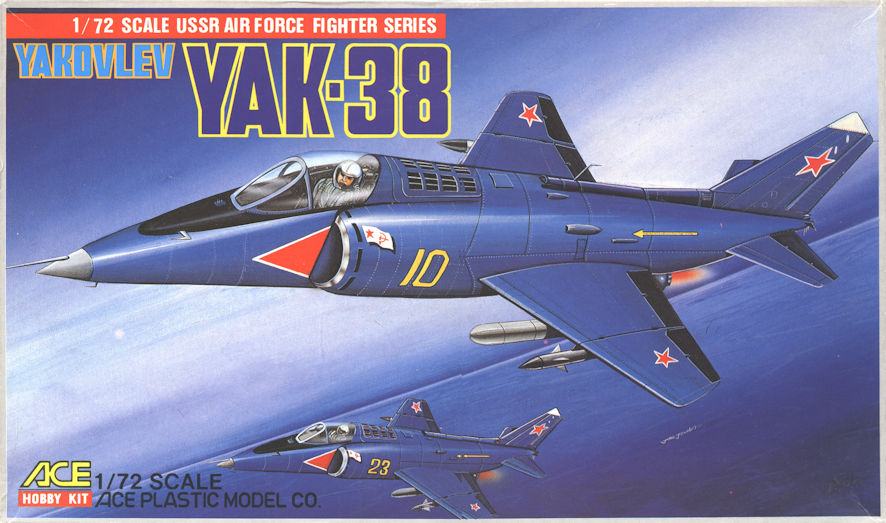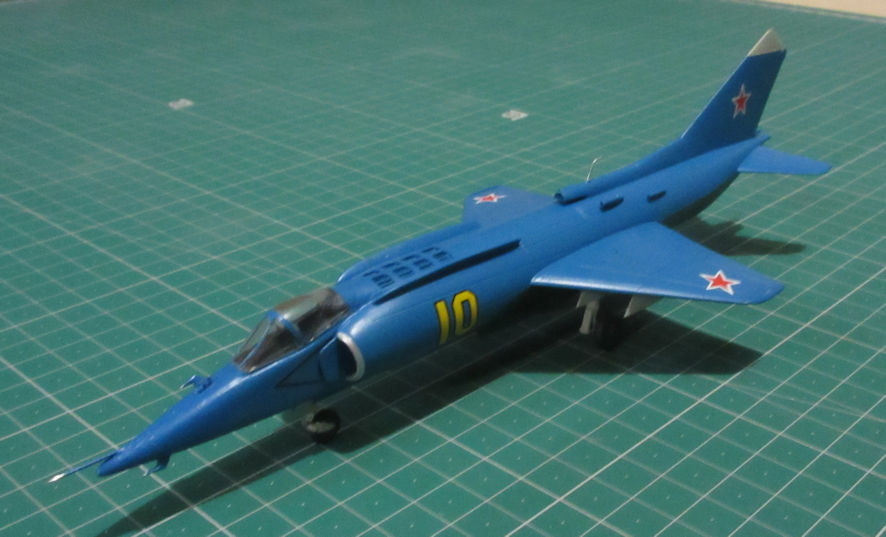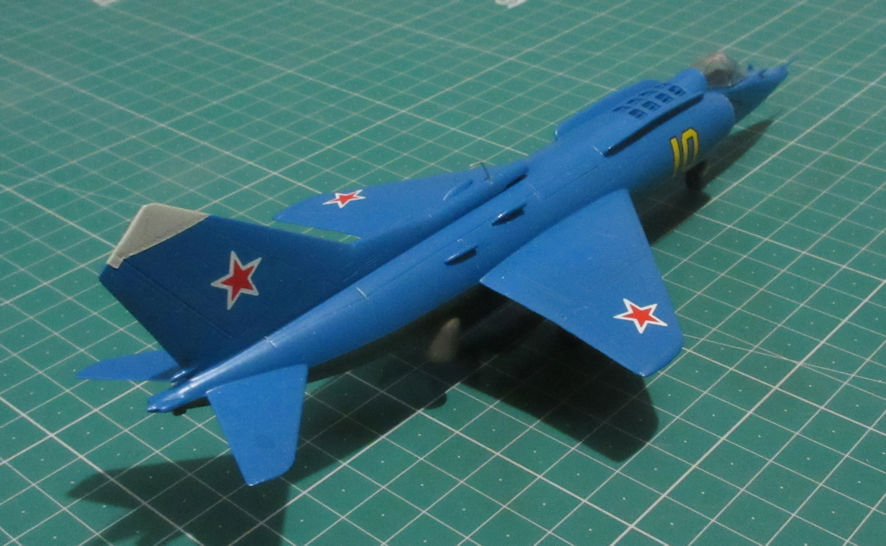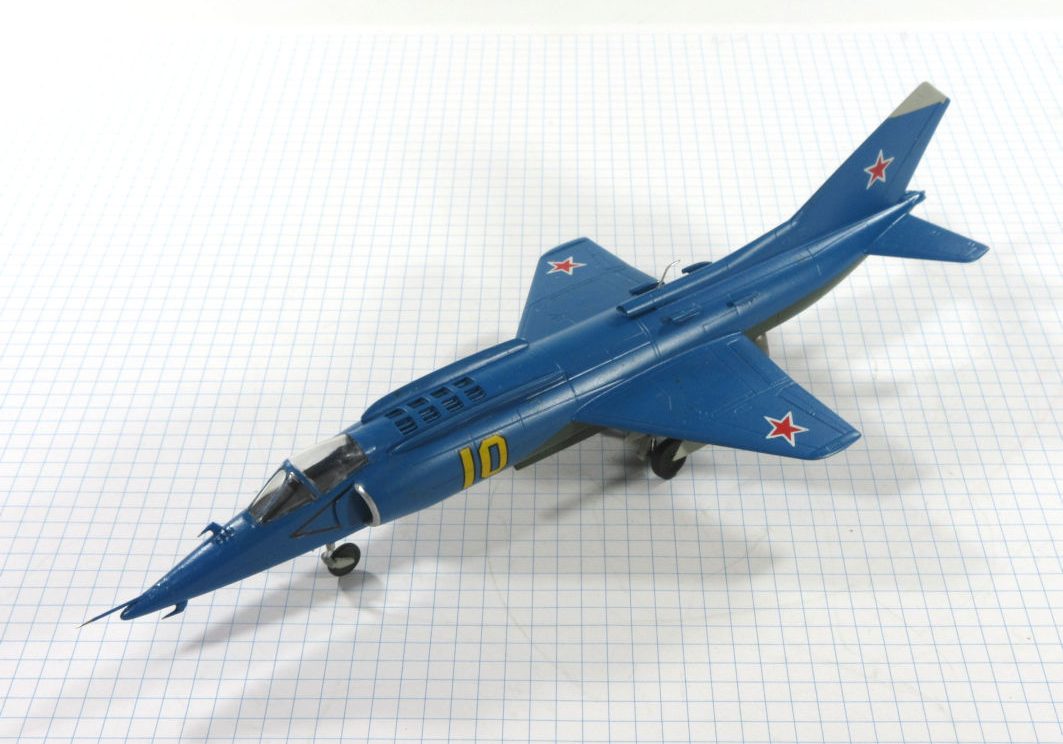It seems that the Red Navy wanted desperately to have aircraft carriers in its fleet but had to be content, at first, with a compromise, the Kiev class medium sized carriers in which only the rear half of the ship was flight deck. This was, of course, not very useful for traditional naval aeroplanes. If the navy wanted to fly winged aeroplanes they would have to be vertical take off and landing, something along the lines of the Hawker Siddeley Harrier. The Yakovlev Bureau in Russia had already developed the Yak-36 (Freehand) that was barely flyable, let alone able to carry a useful payload.
The Yakovlev Bureau had already begun design of a more advanced VTOL fighter and the Red Navy gave approval for construction of five Yak-36M fighters in late 1967. The first hover flight was conducted on 22 September 1970 and the first conventional take off flight on 2 December the same year. However development did not proceed smoothly and the first vertical takeoff, horizontal flight and vertical landing did not occur until 25 February 1972. The first landing on a naval vessel, a helicopter cruiser, occurred on 18 November 1972. The first production aeroplane, by then called the Yak-38 was rolled out in early 1975 and accepted into service in October 1976.
The Yak-38 was not a successful aeroplane. It had a very limited range and payload and suffered severe serviceability problems. Of the six Yak-38s embarked on its first operational cruise three were unserviceable at the beginning of the cruise and only one remained flyable by the end.
During operational tests held during the Afghanistan War in 1980 the Russians decided that helicopter gun-ships were far more effective than the Yak which was difficult, if not dangerous to fly. About 150 were constructed and a third of them were lost in accidents. Pilots did almost anything to avoid flying them and some went as far as making official complaints about the Yak-38s, a rather dangerous thing itself to do at the time.
When the Soviet government collapsed they were soon withdrawn from service. They were grounded after a crash in June 1991 with few regrets. Yak had developed a more advanced Yak-41 VSTOL fighter but the Russian development of a full aircraft carrier made it rather redundant in the face of navailised Sukhoi Su-27s and MiG-29s.

Despite its awfulness as an operational aeroplane the Yak-38 is quite a pretty little aeroplane, sleek in its own way and quite colourful. So far as I can tell you can get the same kit under about four different labels including Revell and Amodel. The instructive thing about these different boxings is that if you read some of the kit reviews on the internet you’d be forgiven for thinking that they were totally different kits. A review of the Revell kit takes forever listing all the problems with the kit, a review of the Amodel version just tells you how to make it from the box (don’t people have time to write anything more interesting than ‘then I glued the right hand fuselage side to the left hand fuselage side’?)
As I bought this as an Ace kit I had no great expectations of it, I was either relieved or impressed – take your pick – when I opened the box. The kit is quite finely moulded and there wasn’t much need for tidying up when it came time to assemble the kit so I only needed a little bit of filler here and there. I chose to make the model with the doors for the lift jets closed but it you want to show them open the kit has two nice little lift jets to put in place. You also get something that is apparently supposed to be the main thrust engine but since it is buried away in the fuselage where nobody will ever find it the addition seems somewhat unnecessary. After all that additional plastic the cockpit is somewhat spartan, but that’s what Plan-B is for. You could go to a bit more trouble if you are that way inclined but I wasn’t able to find much information about what the cockpit might look like.
There are weapons pylons and some weapons on them, but from what I read these aeroplanes weren’t very useful for that kind of thing. So the pylons went on but the weapons went into the spares box.
The major difficulty with this kit was the finishing. In particular, what colours to paint it. I dug up as many photos as I could of the Yak-38 from the internet. Many of them are from a couple of examples standing in open-air museums, only a few are of operational aeroplanes. Either way, it’s fairly clear that the aeroplane should have some kind of darkish blue on top and a sort-of olive green underneath. The instruction sheet isn’t much help because it doesn’t notice the green and gives the upperside blue as 30 per cent black and 7- per cent blue but doesn’t say what kind of blue the upper side is. One review gave the topside blue as FS35164 whish is a reasonable compromise between the colour variations in the various photos but that number implies a matt finish while most operational Yak-38s seem to have been gloss or semi-gloss. In the end I settled for a compromise between all the possibilities that suggested themselves. Who knows which is right.
Then we come to the decals that are sort-of vaguely useful. One reviewer avoided all the problems with colours by doing what was on the box lid, and used the kit decals too.. The stars are a bit small, the numbers are a bit big and the flag on the forward fuselage is far too big, according to all the photos I could find. As for the yellow arrow on the rear fuselage, goodness knows where that came from. However, shuffling through all the photos shows a wide variation of markings, so I just applied the must useless ones off. In the end, not a bad little model.


Leigh Edmonds
February 2005
